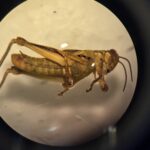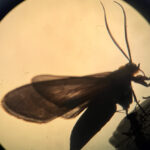Sample information |
|
| Picture |



|
|---|---|
| Location | |
| Collection date | 09/19/2023 |
| Captive / Cultivated? | Wild-caught |
| Group | Palm Beach Atlantic University |
| Observations | On a hot, sunny day, the ant was collected from outside on a tree late afternoon in West Palm Beach, Florida. The cricket was store-bought from Boynton Beach, Florida in a cage that resembled its natural habitat. |
| Putative identification | Arthropoda Insecta Hymenoptera Formicidae |
Methods |
|
| Extraction kit | DNeasy (Qiagen) |
| DNA extraction location | Whole arthropod |
| Single or Duplex PCR | Single Reaction |
| Gel electrophoresis system | Standard electrophoresis system |
| Buffer | TAE |
| DNA stain | GelGreen |
| Gel images |

|
| Protocol notes | Gel Electrophoresis: Since the ant was small, I used the whole body for DNA extraction. Lanes for Gel: -Lane 1: 1 kb ladder -Lane 2: DNA from ant -Lane 3: DNA from cricket -Lane 4: Arthropod positive control (Drosophila with Wolbachia) -Lane 5: Arthropod negative control (Drosophila without Wolbachia) -Lane 6: Wolbachia DNA -Lane 7: Water Analysis: The top band should be present in all lanes except Arthropod (-) control and water. The bottom band indicates Wolbachia is present as seen in the Arthropod (+) control, Wolbachia DNA, and ant DNA. |
Results |
|
| Wolbachia presence | Yes |
| Confidence level | Medium |
| Explanation of confidence level | My band for ant DNA extraction is very faint on the actual gel and harder to see in the picture but the band for Wolbachia in the ant is present. DNA extraction should be done properly to get a more prominent top band. |
| Wolbachia 16S sequence | |
| Arthropod COI sequence |
|
| Summary | The Formicidae was found to be postive for Wolbachia. |
 Differential Grasshopper – Melanoplus differentialis
Differential Grasshopper – Melanoplus differentialis Pill Bug (Armadillidium vulgare) – Draft
Pill Bug (Armadillidium vulgare) – Draft Melanoplus Femurrubrum
Melanoplus Femurrubrum Grasshopper – Orthoptera
Grasshopper – Orthoptera Cisseps Fulvicollis
Cisseps Fulvicollis